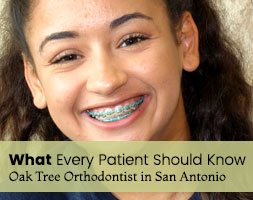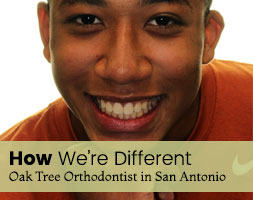How to Classify Teeth
Crossbite
Crossbite can influence both the front and side alignments of the mouth, and can affect multiple teeth, especially the alignment of lower teeth. Crossbite can be caused by a single tooth, or include multiple teeth, and is important to catch early on to ensure the best treatment and the least complications.
Crossbite is important to correct because it can:
- Cause Early wearing on the teeth
- Cause the Development of gum disease and bone loss
- Cause an asymmetrical jaw development and alignment
- Cause issues with chewing patterns
- Cause aesthetic issues with the smile itself
How can a crossbite be orthodontically corrected?
If the crossbite is caused by a single tooth, braces can easily be utilized to change the alignment of the tooth. In more severe cases, a retain may be needed. If there are multiple teeth causing the crossbite, your dental arch may need expanding through braces, or other intra-oral dental treatments that adjust the spread of the jaw.
Openbite
Openbite is caused by an opening between the overlap of the teeth, which can be caused by tongue thrust, thumb-sucking, or an oddity in jaw growth. Early treatment is crucial to prevent the development of more severe symptoms down the road.
Correcting an Openbite Through Orthodontics
Openbite can be fixed using a variety of treatments, including growth modification of the jaw, moving teeth forwards or downwards through extrusion, braces, or, in some cases, jaw surgery. It is also important to correct oral habits, like thumb-sucking and any tongue poking, in order to best treat an openbite.
Overbite
Class II Overbite
An overbite is when the front upper teeth stick out past the lower front teeth, leading to a lack of contact between the upper and lower front teeth. In many cases, the upper teeth will block visibility of the lower teeth. Overbites occur when there is a disproportion of the development of upper and lower teeth, or if the bone that supports the teeth grows unevenly. An overbite is often also called a deep bite by some dentists.
Correcting an overbite is important because it can:
- Cause issues with the function of the front teeth
- Cause irritation in the tissues of the upper mouth due to the bottom teeth biting into the tissue itself
- Lead to unusual bite pattern, leading to uneven wear on the lower teeth
- Lead to jaw joint issues
- Cause issues with the aesthetic appeal of your smile
The Process of Correcting an Overbite Orthodontically
An overbite can be treated by either moving the upper teeth backwards, or moving the bottom teeth forwards in order to eliminate the bite gap. This can lead to a realignment of the teeth themselves and “cure” the overbite.
Overjet
Class II Overjet
Protrusion, also known as an overjet, is caused by the lower teeth being too far removed from the upper front teeth. This is caused by poor molar alignment, known as a Class II Relationship, or bone growth issues between the upper and lower jaw itself. I can also be caused by flaring of the upper incisors, missing teeth, or an amalgamation of all above causes. Dental habits, such as finger-sucking, tongue thrusting, or any other tooth-altering activity, can make an overjet more severe.
Correcting overjet is important because it can:
- Cause issues with the function of the front teeth
- Lead to wear problems on the enamel of the teeth
- Cause issues with the aesthetic appearance of the teeth
Correcting Protrusion Orthodontically
Elastics, functional appliances, and growth modification can all be used to treat the appearance of protrusion in the teeth. In some cases, extraction of the teeth may be necessary to correct the crowding or imbalance caused by the protrusion.
Underbite
Class III Underbite
An underbite is when the lower teeth are in front of the upper front teeth, and can be caused by an undergrowth of the upper jaw, an underdevelopment of the lower jaw, or any combination of the two, also called a Class III Relationship. Missing teeth or flared incisions can also lead to an underbite. It is crucial to repair an underbite as soon as possible to prevent further damages to the surrounding teeth as the mouth ages.
Underbites can cause:
- Issues with the front teeth and molars, leading to wear and functionality issues
- Issues chewing or eating
- Jaw joint issues down the road
- Aesthetic discrepancies
Correcting an Underbite through Orthodontics
Underbites can be fixed using growth modifications of the teeth, removal of some teeth that cause the jaw protrusion, and in some cases, surgical procedures can be used to correct the shape of the jaw itself.





Let’s Be Friends! Oak Tree Orthodontist in San Antonio